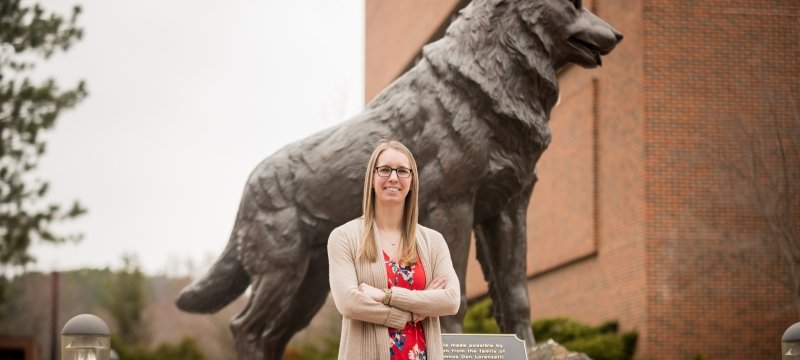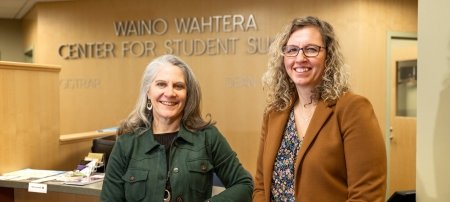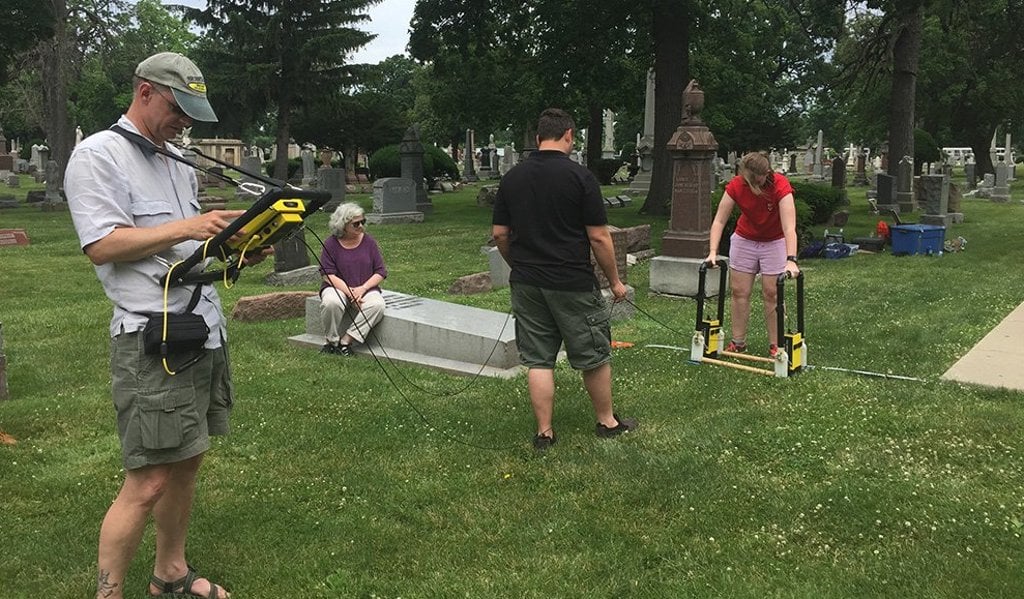Laura Connolly is an assistant professor of economics at MTU. Her research goes far
beyond the basics of labor economics to explore how gender plays a role in shaping
the workforce.
Where is your research focused?
LC: My research is focused on labor economics, with a particular emphasis on gender.
Despite women’s gains in the labor market over the last 50 years, differences between
men and women in the workforce persist. Some of those differences include employment,
wages, and occupations, to name a few. My research explores these differences by looking
at the role of gender in the labor market. One strand of my work looks at the size
of and
explanations for labor market differentials. For example, exploring the gender wage
gap and the conditions under which women are hired into top management or leadership
positions. The other area of my work focuses on the impact of public policies or economic
shocks on labor market outcomes for men and women. Some of my recent work studies
how labor responds to increased trade and labor mobility dynamics in the aftermath
of the Affordable Care Act. I am also involved with local projects looking at the
economic impacts of the projected
closure of Eagle Mine (located outside of Marquette, Michigan), MTU’s research expenditures,
and potential changes in air service at CMX (Houghton County Memorial Airport). It
has been fun to learn more about the local economy and work on projects that are likely
to impact the Upper Peninsula.
What inspired you to get started with this work?
LC: Labor economics was my favorite economics course as an undergraduate; the content
was so relevant and easy to relate to—almost everyone participates in the labor market
at some point in their life. My interest
in the gender dynamics of labor markets came later based on my own experiences and
observations. As a first-year graduate student, I learned about the “leaky pipeline”
in economics—the idea that the proportion of women at each stage of academics declines.
There were several women graduate students in my program, compared to only one woman
tenured or tenure-track professor. This is an issue more broadly in academics, particularly
STEM disciplines, but it is not exclusive to academics. My research interests expanded
to gender in the labor market more broadly over time.
What role does technology play in your research?
LC: Technology and labor are closely related. Does technology complement or replace workers? The answer is usually “it depends”—technology impacts different types of workers in different ways. Women’s labor force participation has nearly doubled since 1950, which coincides with a time period of rapid technological advancement. We’re also seeing the impacts of technology on workers today with the pandemic and the rise of remote work. As time passes, it is becoming more evident that the pandemic and remote work create different challenges and opportunities for different types of workers.
What trends are you seeing in your field?
LC: I’m excited about the trend toward more emphasis on interdisciplinary research. Economics
has a great tool kit, particularly for data analysis. We can also learn from other
disciplines, like management and psychology (among others), to help us tell the full
story. I am also encouraged by the trend to more openly discuss issues in the economics
profession. A few media outlets picked up the findings of a recent paper that found
the economics seminar culture to be more hostile toward women presenters. These issues
cannot be solved overnight, but
talking about them and potential solutions are important steps.
How does your research influence your teaching?
LC: My undergraduate labor economics course is a natural fit to connect my teaching and research. We talk about labor market trends and differences across many demographics in the course, including gender. I incorporate existing research throughout the course to connect economic concepts to real-world data and observations. The course also gives students the opportunity to dig into the data themselves. Students see firsthand how statistics can vary for different groups of workers, and better understand what the statistics are or aren’t measuring.
How do you think your research will impact the future?
LC: That’s a tough one! I hope that my research leads us to think more intentionally
about different groups of workers, and people in general. The labor market isn’t
one-size-fits-all. We need to consider the dynamics of different workers and jobs
when designing policies and programs. It is difficult to predict the future, but we
can learn from past findings to try and make the best decisions possible going forward.
Connolly’s interdisciplinary paper “Is There a Glass Cliff in Local Government Management?
Examining the Hiring and Departure of Women” was published in Public Administration
Review. The authors test the glass cliff hypothesis—the idea that women are often
hired into senior management positions only when an organization is struggling—in
municipal settings. Her job market paper “The Effects of a Trade Shock on Gender Specific
Labor Market Outcomes in Brazil” published in Labour Economics examines the impact
of Brazil’s increased trade with China on gendered local labor market effects in Brazil.
• Regions more exposed to imports from China see reduced wage growth for men and women, but men experience larger losses, particularly in the trade sector.
• Regions more exposed to imports from China also experience increased formal
sector employment growth. Women see larger gains than men, which leads to an increase
in the share of female employment.
• Exports to China have a positive effect on wages, but no effect on employment.
• Reduced labor market discrimination and labor segregation and reallocation are plausible mechanisms. Trade with China is associated with women entering the labor market, particularly the formal sector, which also reduces occupation segregation.
Michigan Technological University is an R1 public research university founded in 1885 in Houghton, and is home to nearly 7,500 students from more than 60 countries around the world. Consistently ranked among the best universities in the country for return on investment, Michigan's flagship technological university offers more than 185 undergraduate and graduate degree programs in science and technology, engineering, computing, forestry, business, health professions, humanities, mathematics, social sciences, and the arts. The rural campus is situated just miles from Lake Superior in Michigan's Upper Peninsula, offering year-round opportunities for outdoor adventure.





